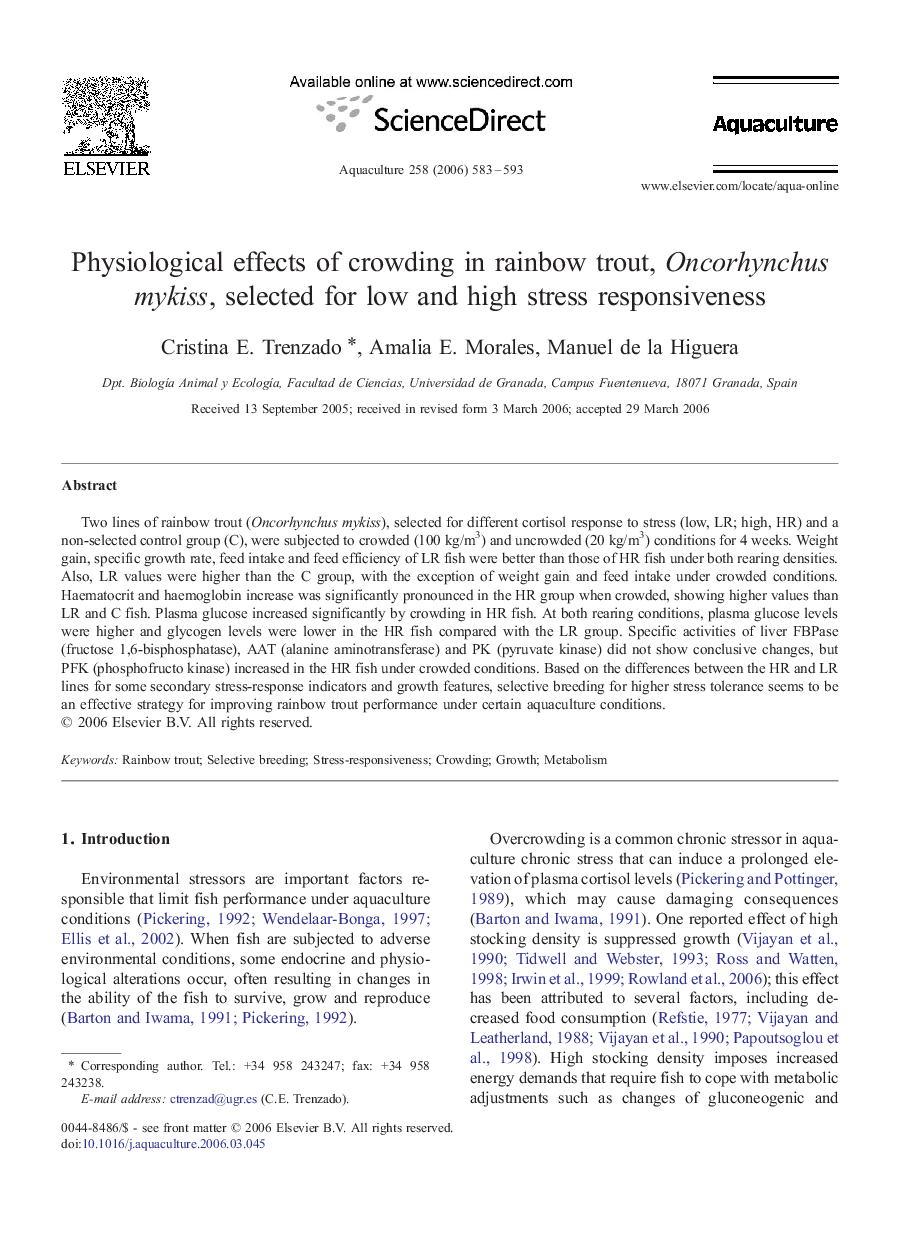| Article ID | Journal | Published Year | Pages | File Type |
|---|---|---|---|---|
| 2425876 | Aquaculture | 2006 | 11 Pages |
Two lines of rainbow trout (Oncorhynchus mykiss), selected for different cortisol response to stress (low, LR; high, HR) and a non-selected control group (C), were subjected to crowded (100 kg/m3) and uncrowded (20 kg/m3) conditions for 4 weeks. Weight gain, specific growth rate, feed intake and feed efficiency of LR fish were better than those of HR fish under both rearing densities. Also, LR values were higher than the C group, with the exception of weight gain and feed intake under crowded conditions. Haematocrit and haemoglobin increase was significantly pronounced in the HR group when crowded, showing higher values than LR and C fish. Plasma glucose increased significantly by crowding in HR fish. At both rearing conditions, plasma glucose levels were higher and glycogen levels were lower in the HR fish compared with the LR group. Specific activities of liver FBPase (fructose 1,6-bisphosphatase), AAT (alanine aminotransferase) and PK (pyruvate kinase) did not show conclusive changes, but PFK (phosphofructo kinase) increased in the HR fish under crowded conditions. Based on the differences between the HR and LR lines for some secondary stress-response indicators and growth features, selective breeding for higher stress tolerance seems to be an effective strategy for improving rainbow trout performance under certain aquaculture conditions.
